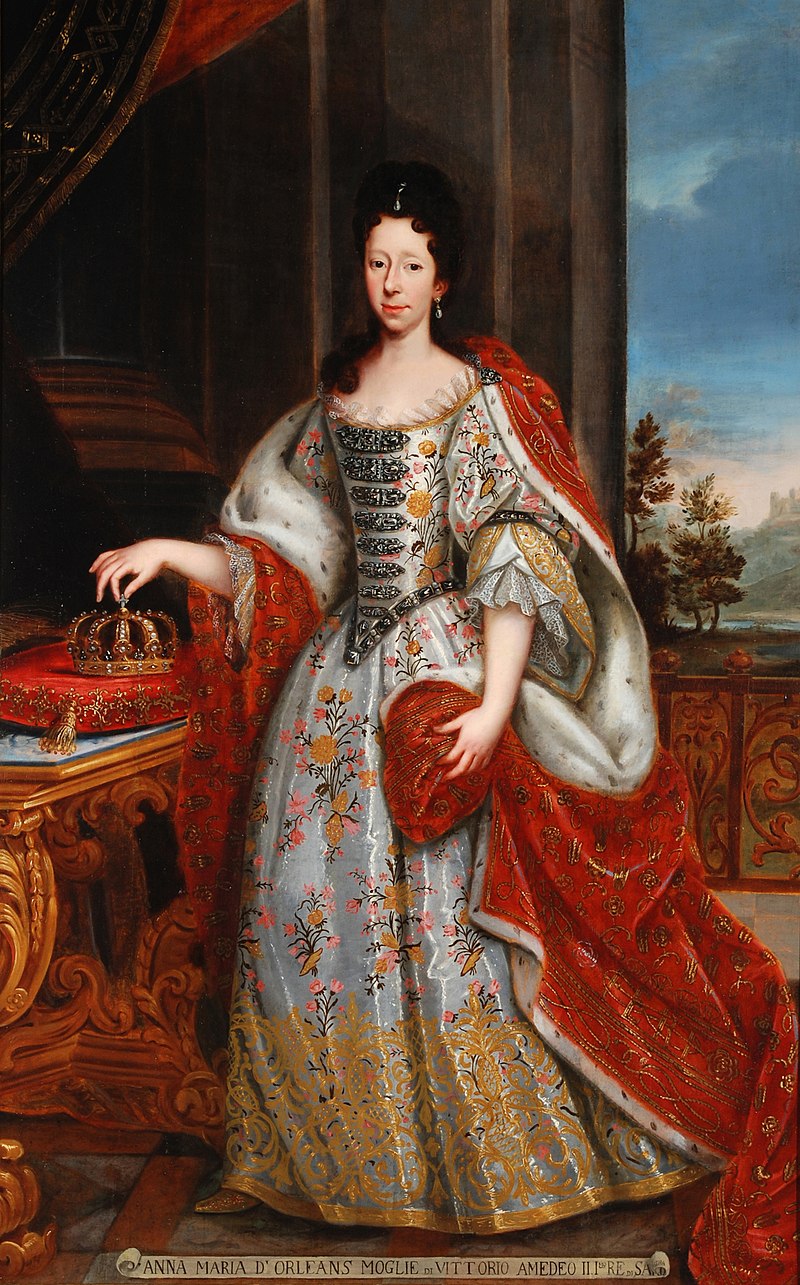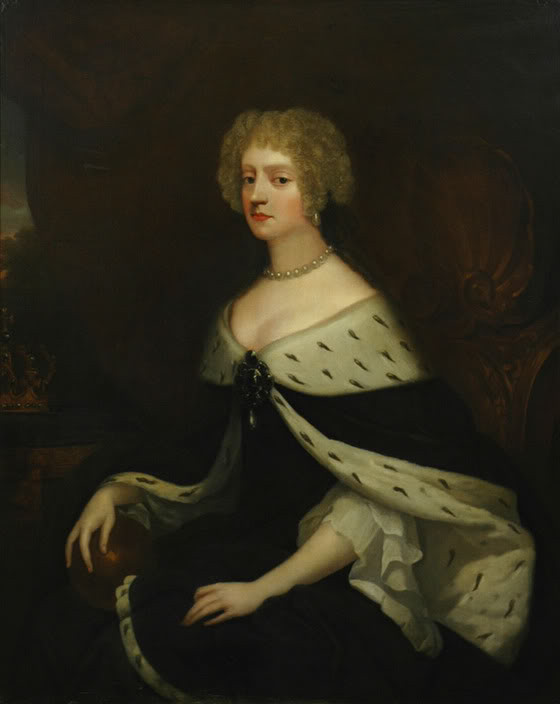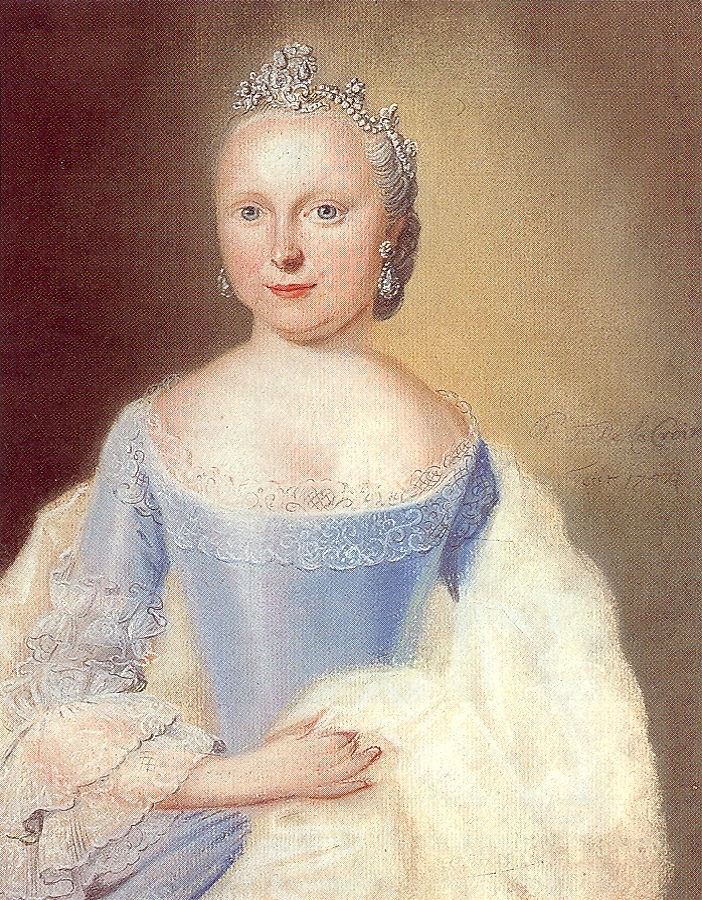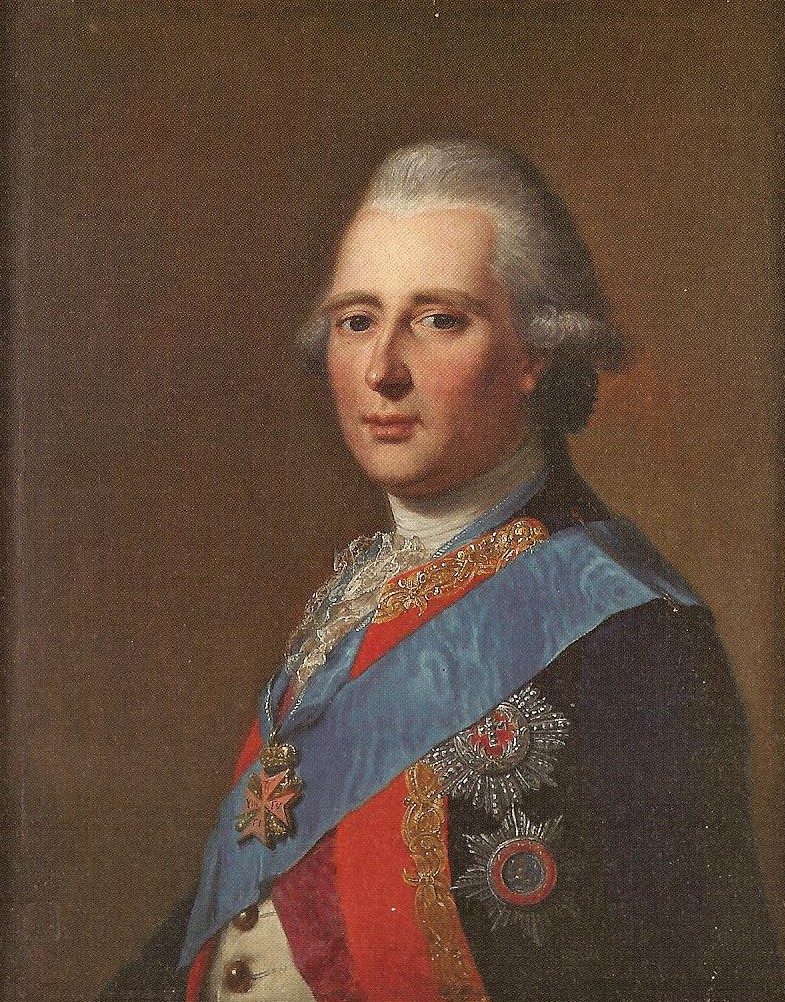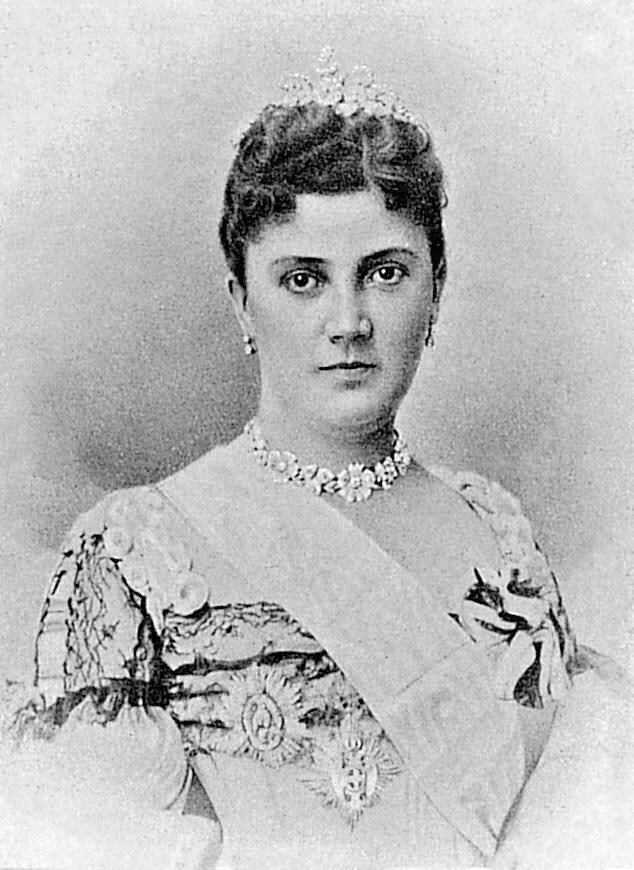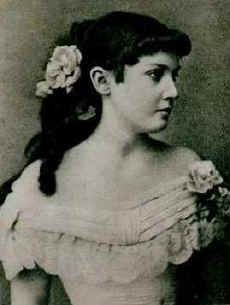by Susan Flantzer
© Unofficial Royalty 2019

Mary II, Queen of England, Queen of Scots, Princess of Orange (1662 – 1694)
(All photos credits – Wikipedia unless otherwise noted)
Mary II, Queen of England, Queen of Scots and Queen Anne of Great Britain were sisters, the only surviving children of the eight children of James II, King of England/James VII, King of Scots and his first wife Lady Anne Hyde. Anne Hyde died before her husband became king and during their marriage, Anne and her husband were the Duke and Duchess of York. Charles I, King of England, King of Scots and Henrietta Maria of France, daughter of King Henri IV of France and Marie de’ Medici, were the paternal grandparents of Mary II and her sister Anne. Their maternal grandparents were Edward Hyde, 1st Earl of Clarendon and his second wife Frances Aylesbury.
Mary II married her first cousin William III, Prince of Orange, the only child of her paternal aunt Mary, Princess Royal and Willem II, Prince of Orange, who had died of smallpox a few days before his son’s birth. William III, Prince of Orange was fourth in line to the English throne after his uncle James, Duke of York and his cousins Mary and Anne. Mary soon became pregnant but suffered a miscarriage which may have prevented any future successful pregnancies. It is suspected that she had at least two more miscarriages. Her inability to have children was Mary’s greatest unhappiness.
Mary and Anne’s father James succeeded his childless brother King Charles II as James II, King of England/James VII, King of Scots. Charles II’s marriage was childless but he had at least fourteen illegitimate children by his mistresses. King James II had converted to Roman Catholicism and set on a course of restoring Catholicism to England. England might very well have tolerated King James II knowing that his heirs were the Protestant daughters of his first wife Anne Hyde, Mary and Anne. However, on June 10, 1688, James II’s second wife Maria Beatrice of Modena, who had no surviving children, gave birth to a son, James Francis Edward. Immediately, false rumors swirled that the infant had been smuggled into the queen’s chambers in a warming pan.
William III, Prince of Orange, the nephew and son-in-law of King James II, landed in England vowing to safeguard the Protestant interest. He marched to London, gathering many supporters. James II panicked and sent his wife and infant son to France. He tried to flee to France about a month later but was captured. William had no desire to make his uncle a martyr, so he allowed him to escape. James was received in France by his first cousin King Louis XIV, who offered him a palace and a pension. This overthrow of King James II is known as the Glorious Revolution.
James II’s elder daughter Mary was declared Queen Mary II and she was to rule jointly with her husband and first cousin William, who would be King William III. Following the death of either William or Mary, the other was to continue to reign. Next in the line of succession would be any children of the couple, to be followed by Mary’s sister Anne and her children. Last in the line of succession stood any children William III might have had from any subsequent marriage. Sadly, in 1694, Mary II died from smallpox at the age of 32. William reigned alone until his death in 1702 when he was succeeded by Mary’s sister Anne.

Anne with her son Prince William, Duke of Gloucester
Queen Anne of Great Britain (1665 – 1714)
Anne had married the Protestant Prince George of Denmark, son of King Frederik III of Denmark and Sophie Amalie of Brunswick-Lüneburg and brother of King Christian V of Denmark. Even though the marriage was arranged, the marriage was happy and they were faithful to each other. Anne became pregnant a few months after her wedding but she gave birth to a stillborn daughter. Anne’s obstetrical history is tragic. She had 17 pregnancies with only five children being born alive. Two died on the day of their birth, two died at less than two years old within six days of each from smallpox, and her longest surviving child Prince William, Duke of Gloucester, died at age 11. Anne suffered from what was diagnosed as gout and had pain in her limbs, stomach, and head. Based upon these symptoms and her obstetrical history, Anne may have had systemic lupus erythematosus which causes an increased rate of fetal death.
The failure of the Protestant Stuarts to produce heirs meant the end of the Protestant Stuart dynasty because the legitimate descendants of King Charles I were either childless or Roman Catholic. The Act of Settlement 1701 secured the Protestant succession to the throne. The act excluded the former King James II (who died a few months after the act received royal assent) and the Roman Catholic children from his second marriage and also excluded the descendants of King James II’s sister Henrietta, the youngest daughter of King Charles I. Parliament’s choice was limited to the Protestant descendants of Elizabeth Stuart, Electress of the Palatinate, the only other child of King James I not to have died in childhood. The senior Protestant descendant was Elizabeth Stuart’s youngest daughter Sophia, Electress of Hanover. The Act of Settlement put Sophia of Hanover and her Protestant heirs in the line of succession after Anne. Electress Sophia of Hanover, the heir to the throne according to the Act of Settlement, died just six weeks before the death of Queen Anne, and so Sophia’s eldest son became King George I and started the House of Hanover.
Mary and Anne shared their paternal cousins with Mary’s husband William and their surviving half-siblings from their father’s second marriage to Maria Beatrice of Modena: James Edward Francis Stuart, Prince of Wales, The Old Pretender and Louisa Maria Teresa Stuart.
- Unofficial Royalty: Mary II, Queen of England, Queen of Scots
- Unofficial Royalty: Queen Anne of Great Britain
********************
Paternal Aunts and Uncles: Children of Charles I, King of England, King of Scots and Henrietta Maria of France

Children of King Charles I in 1637 – Left to right: Mary, James, Charles, Elizabeth, and Anne
- Prince Charles James of England, Duke of Cornwall and Rothesay (born and died 1629)
- Charles II, King of England, King of Scots (1630 – 1685), married Catherine of Braganza, no children, had at least 14 illegitimate children who are first cousins of Mary II and Anne
- Mary, Princess Royal, Princess of Orange (1631 – 1660), married Willem II, Prince of Orange, had one son Willem III, Prince of Orange who married his first cousin Mary II
- Princess Elizabeth of England (1635 – 1650), unmarried, died from pneumonia
- Princess Anne of England (1637 – 1640), died young from tuberculosis
- Princess Catherine of England (born and died 1639)
- Prince Henry, Duke of Gloucester (1640 – 1660), unmarried, died from smallpox
- Princess Henrietta of England, Duchess of Orléans (1644 – 1670), married her first cousin Philippe, Duke of Orléans, brother of King Louis XIV of France, had two daughters and one son
********************
Maternal Aunts and Uncles: Children of Edward Hyde, 1st Earl of Clarendon and his second wife Frances Aylesbury
- Henry Hyde, 2nd Earl of Clarendon (1638 – 1709), married (1) Theodosia Capell, had one son (2) Flower Backhouse, no issue
- Lawrence Hyde, 1st Earl of Rochester (1642 – 1711), married Lady Henrietta Boyle, had one son and three daughters
- Edward Hyde (1645 – 1665), unmarried
- James Hyde (died young)
- Lady Frances Hyde, married Thomas Keightley, had one daughter
********************
PATERNAL FIRST COUSINS
Paternal First Cousins: Child of Mary, Princess Royal, Princess of Orange and William II, Prince of Orange

William III, Prince of Orange, later William III, King of England and William II, King of Scots (1650 – 1702)
William was the only child of William II, Prince of Orange and Stadtholder of the United Provinces of the Netherlands, and Mary, Princess Royal, who was the eldest daughter of King Charles I of England. William’s father died at age 24 of smallpox eight days before William’s birth, so from birth, William was the sovereign Prince of Orange. William married his first cousin Mary, elder daughter of his maternal uncle, James II, King of England/James VII, King of Scots. The couple had no children and later reigned jointly as William III, King of England/William II, King of Scots and Mary II, Queen of England, Queen of Scots. See above for more information.
William and Mary left a legacy in the United States. In 1693, William and Mary granted a royal charter to found the College of William and Mary, now in present-day Williamsburg, Virginia. It is the second oldest university in the United States after Harvard University and the only university in the United States with a royal charter. The College of William and Mary educated American Presidents Thomas Jefferson, James Monroe, and John Tyler and other key figures important to the development of the United States as a nation, including Supreme Court Chief Justice John Marshall, Speaker of the House of Representatives Henry Clay, sixteen members of the Continental Congress, and four signers of the Declaration of Independence. Another alumnus of The College of William and Mary is this writer’s son.
********************
Paternal First Cousins: Children of Princess Henrietta of England, Duchess of Orléans and her first cousin Philippe, Duke of Orléans
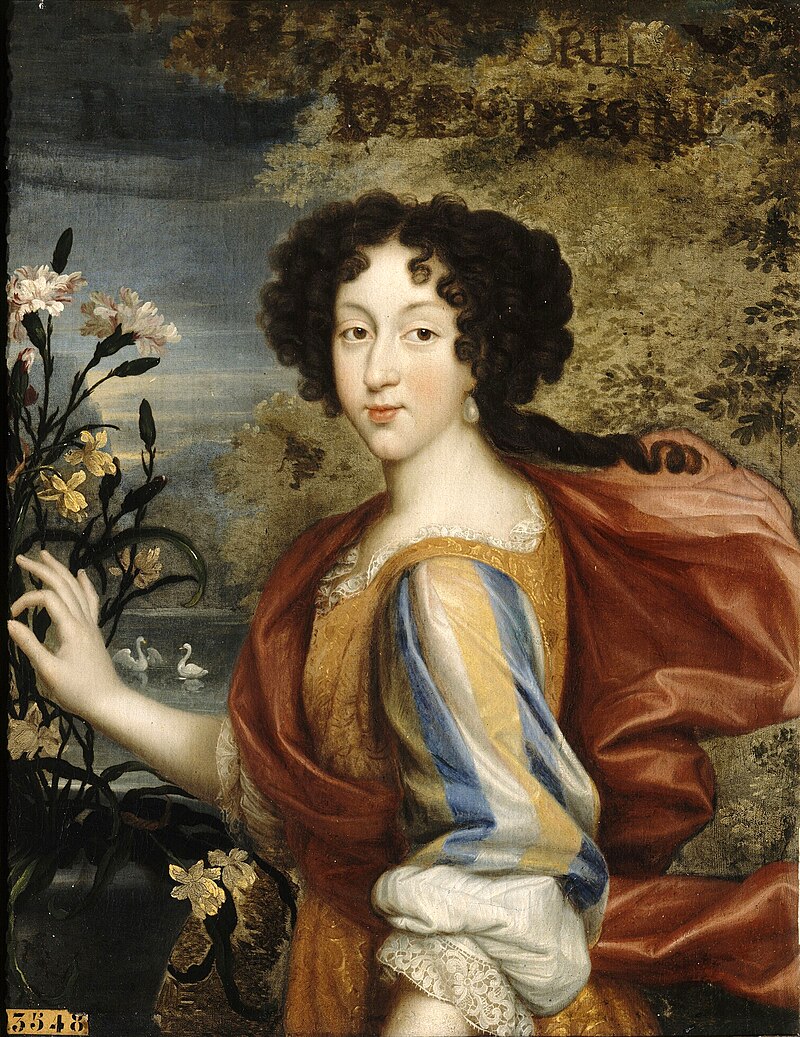
Marie Louise of Orléans, Queen of Spain (1662 – 1689)
Marie Louise was a niece of King Louis XIV of France and a granddaughter of King Louis XIII of France and King Charles I of England. Her marriage to King Carlos II of Spain was part of a plan to have better relations with Spain. Carlos suffered from physical and mental disabilities, most likely the result of inbreeding. His parents were uncle and niece and all eight of his great-grandparents were descendants of Joanna, Queen of Castile and Philip I, King of Castile. After ten years of marriage, Marie Louise and Carlos still had no children. Marie Louise died at the age of 26 after suffering from sudden, severe abdominal pains. Unconfirmed rumors said that she had been poisoned at the instigation of her mother-in-law because she had no children.
********************
Philippe Charles of Orléans, Duke of Valois (1664 – 1666) died in childhood
********************
Anne Marie of Orléans, Queen of Sardinia (1669 – 1728)
Anne Marie married Victor Amadeus II, Duke of Savoy, the future King of Sardinia, and had three daughters and three sons including Marie Adélaïde of Savoy who was the mother of King Louis XV of France. Anne Marie and Victor Amadeus’ descendants include King Felipe VI of Spain; Philippe, King of the Belgians; Grand Duke Henri of Luxembourg; Henri, Count of Paris, the Orléanist pretender to the French throne; and Victor Emmanuel of Savoy, the pretender to the Italian throne. In addition, after the death of Henry Benedict Stuart when the line King James II of England ended, the Jacobite claim to the British throne descended from Anne Marie. See Unofficial Royalty: The Jacobite Succession – Pretenders to the British Throne
********************
Paternal First Cousins: Illegitimate Children of Charles II, King of England, King of Scots
King Charles II is an ancestor through his mistresses of many British aristocrats and of several women who married into the British Royal Family:
- Lucy Walter: ancestor of Sarah, Duchess of York and Princess Alice, Duchess of Gloucester
- Barbara Villiers, Duchess of Cleveland: ancestor of Diana, Princess of Wales and Sarah, Duchess of York
- Louise Renée de Penancoet de Kérouaille, Duchess of Portsmouth: ancestor of Diana, Princess of Wales, Camilla, Duchess of Cornwall, and Sarah, Duchess of York
by Lucy Walter

James Scott, Duke of Monmouth (1649–1685), married Anne Scott, 1st Duchess of Buccleuch, had four sons and two daughters, executed for treason
********************
Charlotte Jemima Henrietta Maria FitzRoy, Countess of Yarmouth (1650–1684), married (1) James Howard, had one daughter (2) William Paston, 2nd Earl of Yarmouth, had two daughters and one son
********************

Charles FitzCharles, 1st Earl of Plymouth (1657–1680), married Lady Bridget Osborne, daughter of Thomas Osborne, 1st Duke of Leeds, no children
Catherine FitzCharles (born 1658; she either died young or became a nun)
********************
by Barbara Villiers, Duchess of Cleveland (in her own right), wife of Roger Palmer, 1st Earl of Castlemaine
Lady Anne Palmer, Countess of Sussex (may have been the daughter of Roger Palmer, but Charles II accepted her as his child) (1661–1722), married Thomas Lennard, 1st Earl of Sussex, had two sons and two daughters
Charles Fitzroy, 2nd Duke of Cleveland, 1st Duke of Southampton (1662–1730), married (1) Mary Wood, no children, (2) Anne Pulteney, had three sons and three daughters

Henry Fitzroy, 1st Duke of Grafton (1663–1690), married Isabella Bennet, 2nd Countess of Arlington, had one son
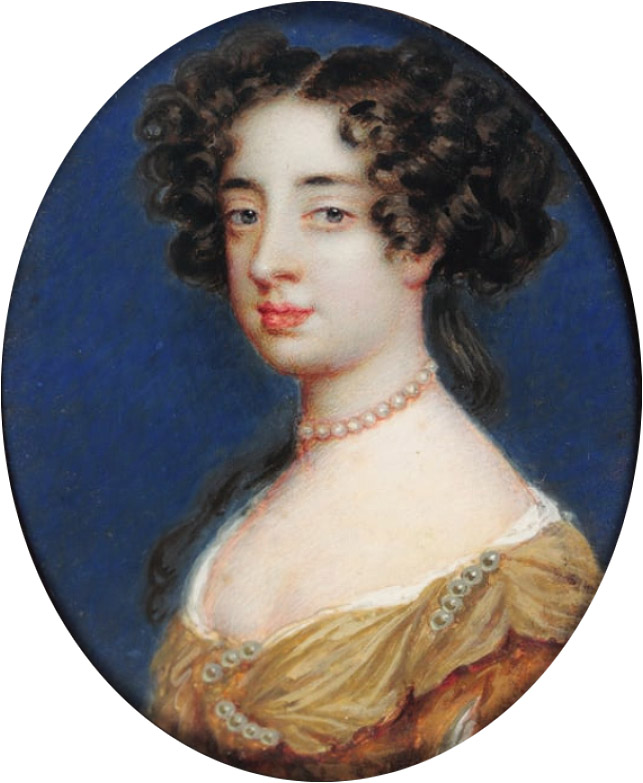
Charlotte Fitzroy, Countess of Lichfield (1664–1717), married Edward Lee, 1st Earl of Lichfield, had thirteen sons and five daughters
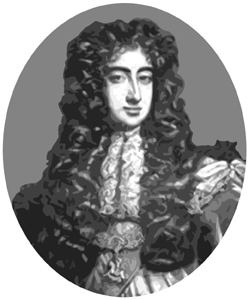
George Fitzroy, 1st Duke of Northumberland (1665–1716), married (1) Catherine Wheatley, no children, (2) Mary Dutton, no children
********************
by Nell Gwyn

Charles Beauclerk, 1st Duke of St Albans (1670–1726), married Lady Diana de Vere, had nine sons and three daughters
Lord James Beauclerk (1671–1680), died young
********************
by Louise Renée de Penancoet de Kérouaille, Duchess of Portsmouth (in her own right)

Charles Lennox, 1st Duke of Richmond, 1st Duke of Lennox, 1st Duke of Aubigny (1672–1723), married Anne Brudenell, had two daughters and one son
********************
- Lady Mary Tudor (1673–1726), married (1) Edward Radclyffe, 2nd Earl of Derwentwater, had three sons and one daughter (2) Henry Graham of Levens, no children (3) Major James Rooke, no children
********************
MATERNAL FIRST COUSINS
Maternal First Cousins: Child of Henry Hyde, 2nd Earl of Clarendon and his first wife Theodosia Capell
Edward Hyde, 3rd Earl of Clarendon (1661 – 1723)
At the start of the Glorious Revolution, Edward Hyde was a supporter of his first cousin Mary and her husband William III of Orange over his uncle by marriage King James II. His support was rewarded by later appointments as Colonial Governor of New Jersey and the Colonial Governor of New York. He married Katherine O’Brien, 8th Baroness Clifton and had three daughters and one son.
********************
Maternal First Cousins: Children of Lawrence Hyde, 1st Earl of Rochester and Lady Henrietta Boyle
Henry Hyde, 4th Earl of Clarendon and 2nd Earl of Rochester (1672 – 1753)
Henry Hyde was a Member of Parliament, High Steward of the University of Oxford, and a member of the Privy Council. He succeeded his father as 2nd Earl of Rochester and his cousin as 4th Earl of Clarendon. Henry married Jane Leveson-Gower, daughter of Sir William Leveson-Gower, 4th Baronet, and had five daughters and three sons. He died six months after his last surviving son died and so both his earldoms became extinct.
********************
Lady Anne Hyde, Duchess of Ormonde (died 1685)
Lady Anne married James FitzJames Butler, 2nd Duke of Ormonde and had one daughter.
********************
Lady Mary Hyde, Baroness of Conway (1669 – 1709)
Lady Mary married Francis Seymour-Conway, 1st Baron Conway of Ragley, 1st Baron Conway of Killultagh and had four daughters.
********************
Lady Henrietta Hyde, Countess of Dalkeith (1677 – 1730)
Lady Henrietta married Sir James Scott, Earl of Dalkeith, son of James Scott, 1st Duke of Monmouth, the illegitimate son of King Charles II, and Anne Scott, 1st Duchess of Buccleuch. The couple had three sons, two daughters and one child whose name and gender is unknown.
********************
Maternal First Cousins: Child of Lady Frances Hyde and Thomas Keightley
Catherine Keightley
Catherine’s father was the Vice-Treasurer of Ireland. She married a Member of Parliament, Lucius O’Brien, son of Sir Donough O’Brien, 1st Baronet. The couple had four children.
********************
This article is the intellectual property of Unofficial Royalty and is NOT TO BE COPIED, EDITED, OR POSTED IN ANY FORM ON ANOTHER WEBSITE under any circumstances. It is permissible to use a link that directs to Unofficial Royalty.
Works Cited
- Lundy, D. (2019). Main Page. [online] Thepeerage.com. Available at: http://www.thepeerage.com/. (for genealogy information)
- Unofficial Royalty. (2019). Unofficial Royalty. [online] Available at: https://www.unofficialroyalty.com. (for biographical and genealogy information)
- Wikipedia. (2019). Main Page. [online] Available at: https://en.wikipedia.org/. (for biographical and genealogy information)

